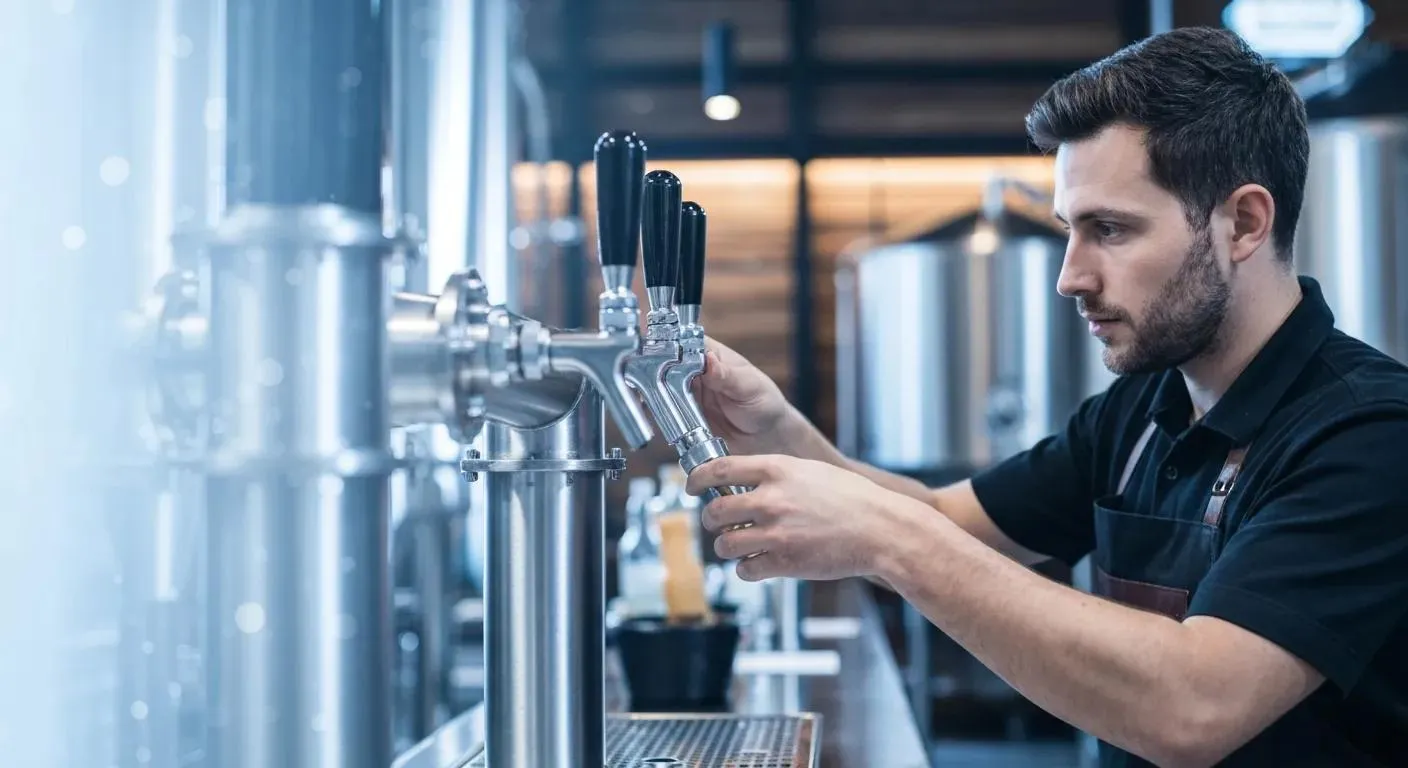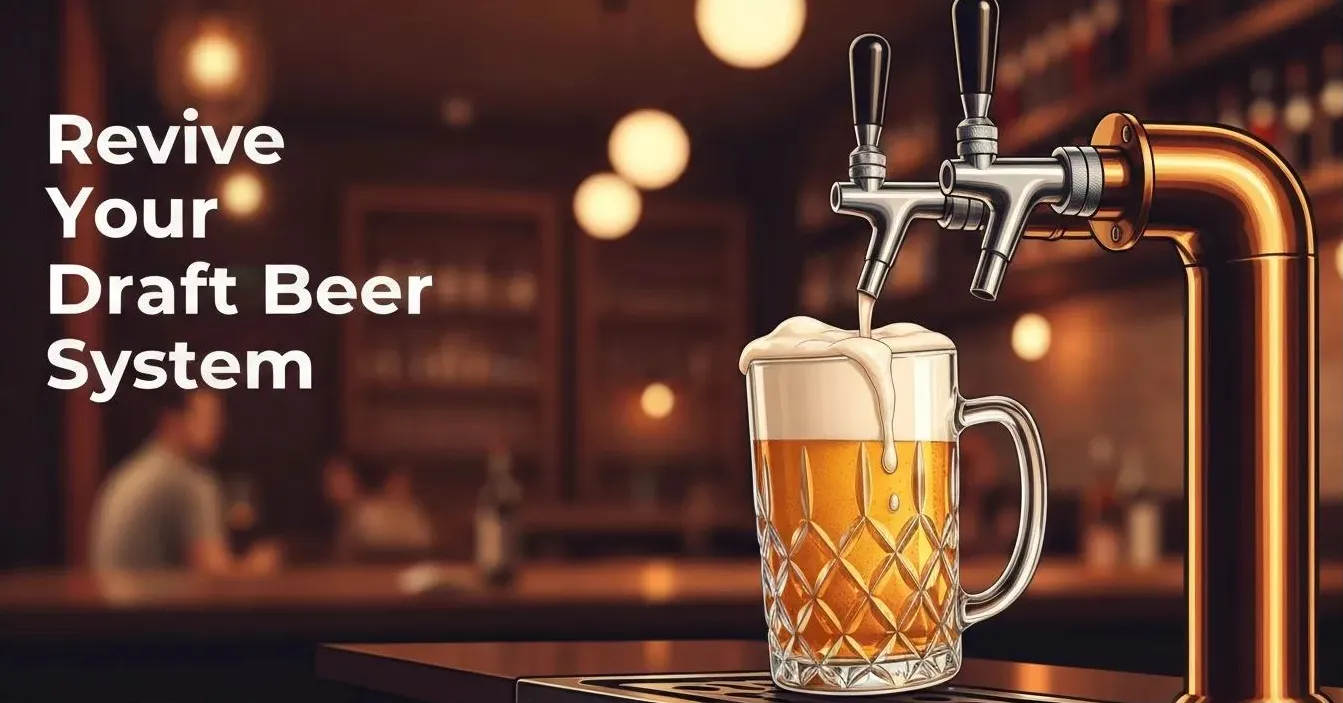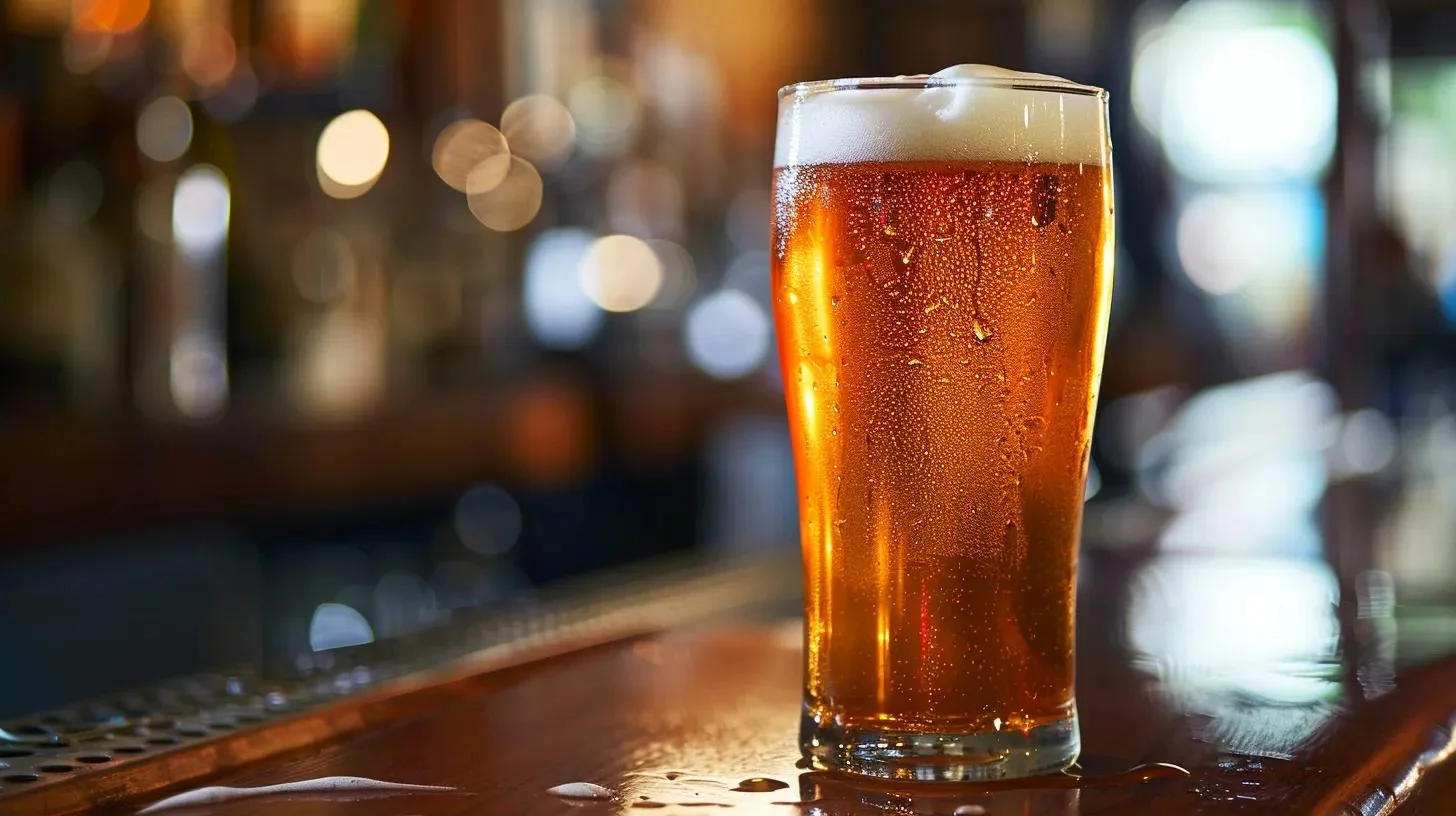Nitrogen Beer Regulator Essentials: Optimizing Your Draft System

A nitrogen beer regulator is an essential piece of equipment for dispensing nitrogen-carbonated beers, commonly known as nitro beers. Unlike CO2 regulators, nitrogen regulators are designed to accommodate the higher pressures required by nitrogen tanks.
The use of nitrogen in draft beer dispensing systems results in smaller bubbles, creating a smoother and creamier texture, which is particularly desirable for certain styles like stouts.
Installing and using a nitrogen beer regulator requires a clear understanding of the particular needs of nitrogen systems. They usually have a higher pressure rating and utilize specialized connectors to safely attach to nitrogen tanks.
The proper operation and regular maintenance of these regulators are crucial for ensuring the quality and consistency of the served beer. Nitrogen regulators can be single or dual-gauge, with the dual and double-gauge models displaying both the output pressure CO2 regulator and the remaining gas in the tank.
Key Takeaways
- Nitrogen beer regulators are specialized for nitro beer styles, providing the correct pressure for a creamy pour.
- They must be correctly installed and maintained to ensure the quality of the beer served.
- Understanding the operation of single versus dual gauge models is important for managing keg pressure and gas levels.

Understanding Nitrogen Beer Regulators
Proper nitrogen regulation is critical for achieving the right pour and taste when dispensing nitrogenated beers. An accurate understanding of how these regulators work, their distinctions from CO2 regulators, and how to select the right one is essential for any draft beer system.
Fundamentals of Nitrogen Regulators
Nitrogen beer regulators maintain the proper pressure amount of nitrogen gas in the system, ensuring a consistent flow from the gas cylinder to the keg. They often feature a CGA-580 valve, specifically designed for nitrogen tanks.

A standard nitrogen regulator comes with one or more pressure gauges to monitor the pressure applied to the keg. The typical setup includes a primary regulator which attaches directly to the gas cylinder, and, in some systems, a secondary regulator that allows further control of the gas flow rate to multiple kegs.
Comparison with CO2 Regulators
While both nitrogen and CO2 regulators serve the same purpose of maintaining gas pressure inside them, they have distinct differences. CO2 regulators are built to handle the pressure of carbon dioxide and cannot be connected to nitrogen tanks due to differences in threading and pressure requirements.
Notably, nitrogen regulators handle higher pressures and are equipped with male threads with conical fittings. This distinction ensures safety and proper fitting when dealing with nitrogen pressurization in kegerators.
Selecting the Right Regulator for Your Beer
Selecting the correct nitrogen regulator depends on the type of draft beer dispensing system and the setup of the draft system. For those dispensing nitrogen-rich beers like stouts or certain ales, acquiring a properly functioning regulator that can handle the appropriate pressure levels is crucial.
It should reliably maintain the pressure recommended for the specific type of beer, generally between 30-40 PSI. Moreover, the choice between single or dual gauge regulators depends on whether the user needs to monitor just the tank pressure or also the output pressure to the keg. Compatibility with existing equipment, such as the keg coupler and gas cylinder, should also be taken into consideration.
Installation and Setup
Installing and setting up a nitrogen beer regulator is crucial for ensuring the perfect pour. It requires connecting the equipment properly and setting the correct pressure to achieve the desired carbonation levels.

Connecting Your Nitrogen Regulator
To connect a nitrogen regulator, first ensure the nitrogen tank valve is closed. The regulator attaches to the tank via the nitrogen tank itself's female connector. It's important to secure the regulator firmly to prevent leaks, often by hand-tightening followed by a small turn with a wrench.
Once the nitrogen regulator is in place, the hose can be attached to the tank connection the outlet fitting of the regulator. The other end of the hose connects to the keg using the appropriate 5/16" barb or female stem piece, depending on the keg coupler.
Adjusting Pressure and Carbonation
Adjusting the pressure of a nitrogen beer regulator involves careful monitoring of the pressure gauge.
The adjustment knob allows the brewer to set the output pressure, measured in psi (pounds per square inch), which is critical for proper carbonation.
To increase the pressure, turn the knob clockwise; to decrease, turn counterclockwise. After adjustments, the gauge should reflect changes in the output pressure. It is advised to start with a lower psi and gradually increase as needed to achieve the desired carbonation level.
Operation and Maintenance
The operation and maintenance of nitrogen beer regulators are crucial for the consistent and safe dispensing of draft beer. Proper handling and properly functioning regulators ensures the longevity of the draft beer equipment and the quality of the beer.
Daily Operations of Nitrogen Regulators
To operate a nitrogen beer regulator, monitor the pressure of the double gauge very closely to the double gauge regulator to maintain the appropriate dispensing pressure, crucial for the perfect pour.
The shut off valve should be opened gradually to allow gas to flow, and the pressure release valve used to adjust the flow and stabilize the pressure as needed.
Troubleshooting Common Issues
When encountering issues such as excessive foam, it may indicate that the dispensing pressure is too high. Conversely, dispensing beer with too little pressure can lead to flat beer.
Regular troubleshooting should involve checking the check valve for obstructions and inspecting the pressure relief valve to ensure it operates correctly, venting excess pressure to prevent keg damage.
Routine Maintenance and Safety
Maintenance should include periodic cleaning of all components and checking the safety relief valve to ensure proper pressure so it’s not compromised.
Maintenance of the regulator often involves recalibrating the pressure gauge and replacing worn relief valves. Always follow manufacturer guidelines to maintain the regulator’s integrity and safety standards.
Advanced Applications
In the realm of draft beer systems and specialty beverage dispensing, nitrogen regulators play a crucial role in maintaining precision and quality. They are central to applications ranging from nitrogen-infused coffee to the consistent delivery of wine and beer.
Nitrogen Regulators in Different Draft Systems
Draft beer systems rely on regulators to maintain the ideal pressure for serving and preserving beer.
A nitrogen regulator ensures that beer, particularly those like stouts, are served with the right amount of foaming and bubbles, enhancing the texture and taste. A gas blender may be used in conjunction with nitrogen regulators to mix gasses in precise ratios, essential for specialty brews where a specific carbonation level is desired.

For more complex systems, a Green Air Supply Nitrogen Separator might be used to deliver gas to multiple kegs.
Products like those from Micromatic demonstrate the use of a double gauge nitrogen regulator, providing real-time data on pressure and gas levels. This precision is key for establishments serving a variety of nitrogenated beverages, such as cold brew coffee or wine, ensuring optimal freshness and flavor.
Specialized Use Cases
Regulators specifically designed for nitrogen use, such as those stocked by beer regulation experts, allow for specialized applications.
In coffee shops, nitrogen regulators enable baristas to offer nitro cold brew coffee, a creamy drink with a foamy head similar to that of draft beer. The regulator maintains consistent pressure, which is crucial for producing the signature cascade of bubbles.
Wineries can also benefit from nitrogen regulators by using them to prevent oxidation in wine, keeping it fresh for a longer period. The process requires precision to avoid altering the wine's delicate flavors or introducing unwanted carbonation, which can compromise the tasting experience.
Handling distribution and flow with precision is essential in such applications, and it's where a quality nitrogen regulator becomes indispensable.
Summary
A nitrogen beer regulator is a crucial component in the dispensing process of nitrogen-carbonated beverages. Nitrogen gas regulators have higher pressure and different connection standards compared to CO2 gas regulators.
Key Features:
- Pressure Adjustment: Allows the user to set specific pressure levels to the keg.
- Outlet Fitting: Connects the keg coupler to the regulator.
- Inlet Connection: Links the regulator to the nitrogen gas tank.
The market offers various types of regulators, including those with:
- Single Gauge: Displays only the output pressure.
- Dual Gauge: Shows both the output pressure and tank pressure, usually measured in PSI.
For enthusiasts interested in home brewing or for commercial applications, choosing the correct nitrogen regulator is essential. A high-quality nitrogen regulator is equipped with safety features like a pressure relief valve and a no-backflow check valve to ensure safety and maintain beverage quality.
When purchasing a regulator, consumers should ensure compatibility with their existing equipment. The regulator must fit the nitrogen tank in use, and it should be able to handle the specific pressures needed for the nitrogenated beverages being dispensed.



